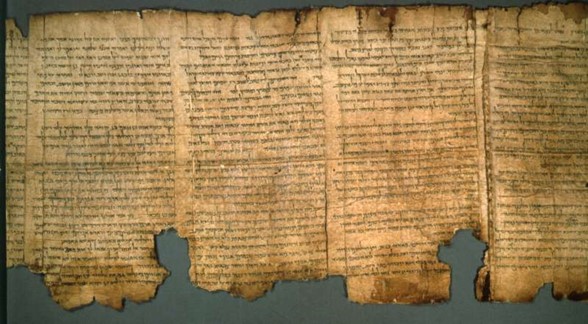 About Isaiah
About Isaiah
How do we know what Isaiah (Isaiah means “God helps” or “God saves”) really said? He prophesied from about 740-680 BC. That’s a long time ago, but we can have confidence that the words he spoke are the words we have in our Bibles.
The photo above is that of the Great Isaiah Scroll, discovered in 1948 as a part of the Dead Sea Scrolls find. This is the same photo we’re using on our webpage and Facebook page.
The Dead Sea Scrolls were copied from older documents and date between 250 BC to 50 AD. The Isaiah scroll is estimated to be from 100 BC. This is a nearly complete copy of the book of Isaiah, although you can easily see that the scroll is damaged.
This find is significant. Before 1948, the oldest copy of Isaiah was dated 1000 AD. That’s just 1000 years ago. We now have a copy that dates 2100 years ago.
Game of Telephone?
Why is this so important? Many scholars scoffed at the idea that the Bible was transmitted (copied) correctly. It was accepted as fact that the Bible was handed down much like the game “telephone.” If you remember playing this, one person whispers a phrase in the ear of the person next to him. Then that person whispers the same phrase to the person next, and so on. If the group is large, it is likely that the phrase is nothing like the original phrase.
So the accuracy of the Bible is cast into doubt, and if the Bible can be dismissed in this way, so can its meaning. The Bible has no authority if we don’t know what it said.
The discovery of the Dead Sea Scrolls disproved this idea:
“So carefully preserved are these texts that when scholars studied the Dead Sea Scroll of Isaiah, only three minor spelling changes (comparable to the difference between spelling “Saviour” and “Savior”) were found in a text that covers about 100 pages in many English translations. That is an outstanding record of preserving the text of the Bible, which represents over a thousand years of copying the text.”
Walter C. Kaiser Jr., “Is the Old Testament Trustworthy?,” in The Apologetics Study Bible: Real Questions, Straight Answers, Stronger Faith, ed. Ted Cabal et al. (Nashville, TN: Holman Bible Publishers, 2007), 346
How can the copying be so accurate? Here are some of the rules for scribes:
THE TALMUDISTS transmitted the text between c300 BC and 500 AD Here are some of the rules they followed:
- Only the skins of clean animals were permitted to be used for a synagogue roll.
- These skins had to be prepared for this special purpose according to strict procedure, by a Jew.
- They were bound together with strings from clean animals.
- Each skin must contain exactly the same number of columns as all other skins in the codex–no variation was permitted.
- The columns could not be less than 48 lines, nor could they be more than 60 lines; and they had to be exactly 30 letters wide.
- The entire copy had to be first-lined, and if three words were written without a line, the entire copy was destroyed.
- The only colour of ink that was permissible was black, and there was a prescribed recipe for its preparation.
- It was not permissible to write even a yod from memory (a yod [é] is one the smallest of the Hebrew characters).
- It was mandatory that each character (the Hebrew only has consonants) be separated by the space of a hair, or thread, and it must be uniform throughout the document.
- The width of nine consonants was required between sections.
- The space between books was a mandatory three lines.
- Moses’ fifth book had to end exactly with a full line, while the rest did not necessarily have to.
- Those copying the text had to sit in full Jewish customary dress.
- A complete bath was mandatory before beginning a copy session.
- The copyist may not begin to write the name of God with a newly dipped pen.
- If the King should address the copyist while he was writing the name of God he was not permitted to respond to the king until the writing of that name was completed (even if it cost him his life).
If any of these rules were broken during a copy session, the entire roll was burned, or used as a reader in the schools; it was condemned as unfit for use in the synagogue.
We can have complete confidence in the Bible! What is really important in our opening of Isaiah is that we hear, understand, and heed his message!
